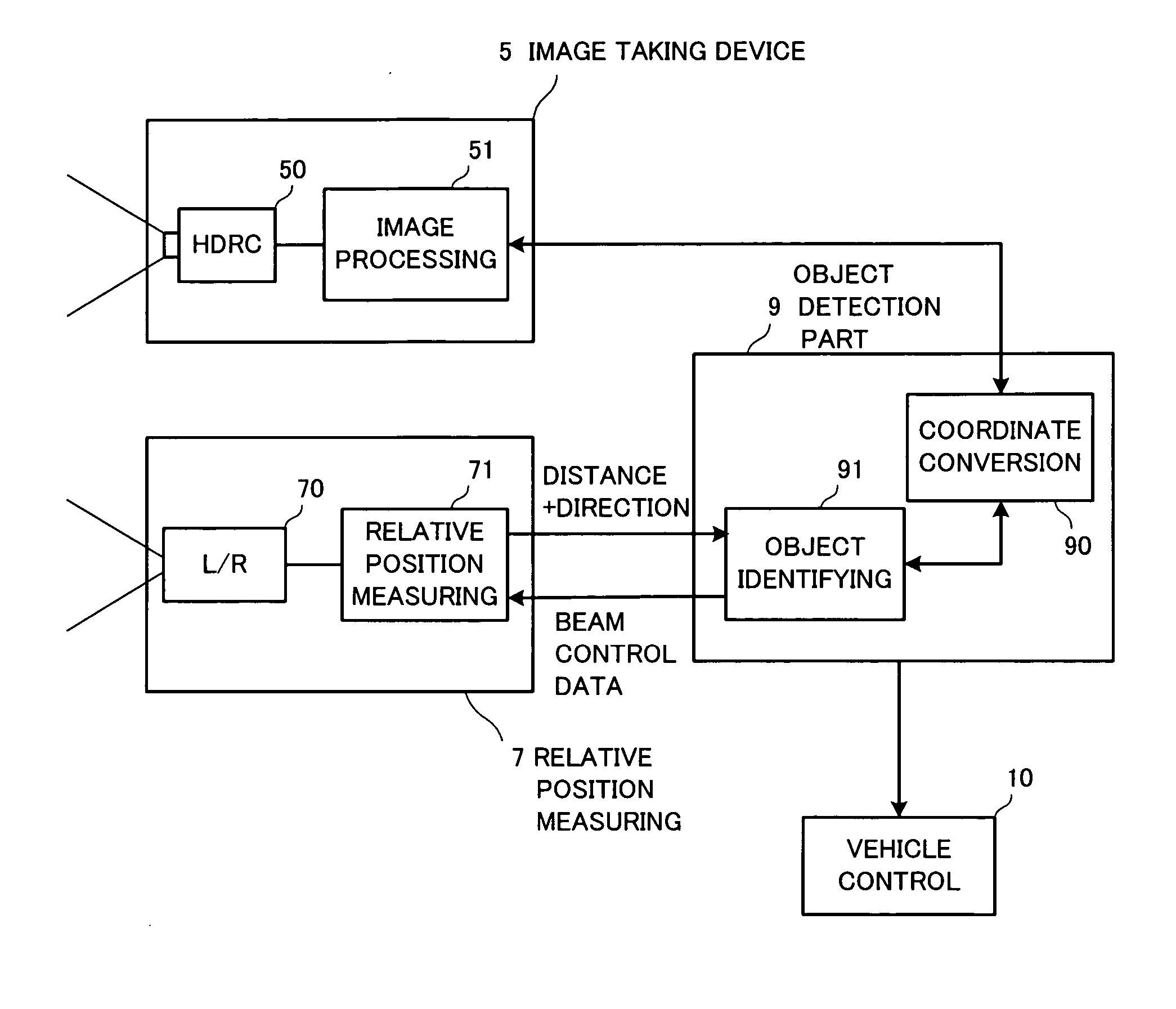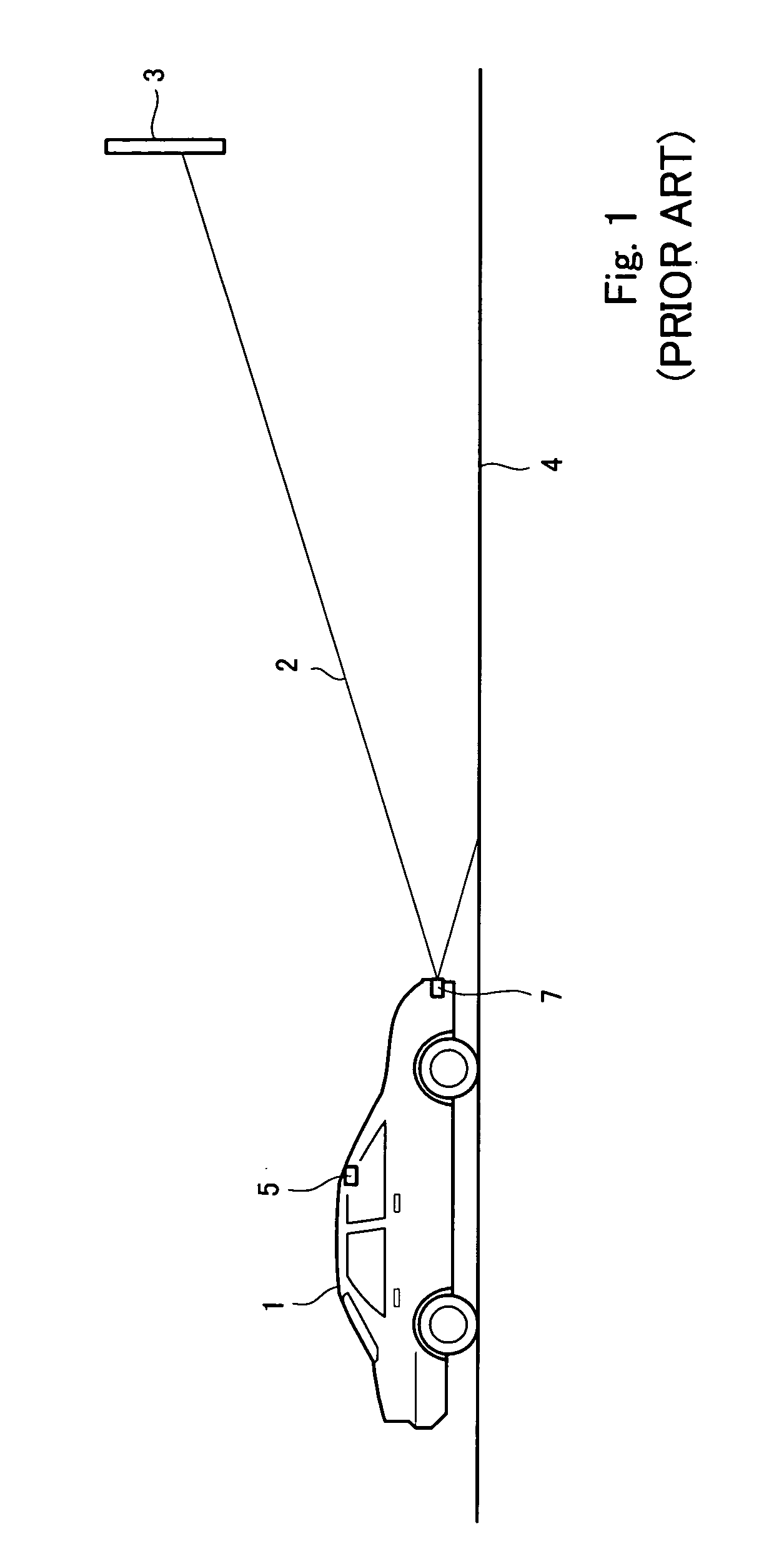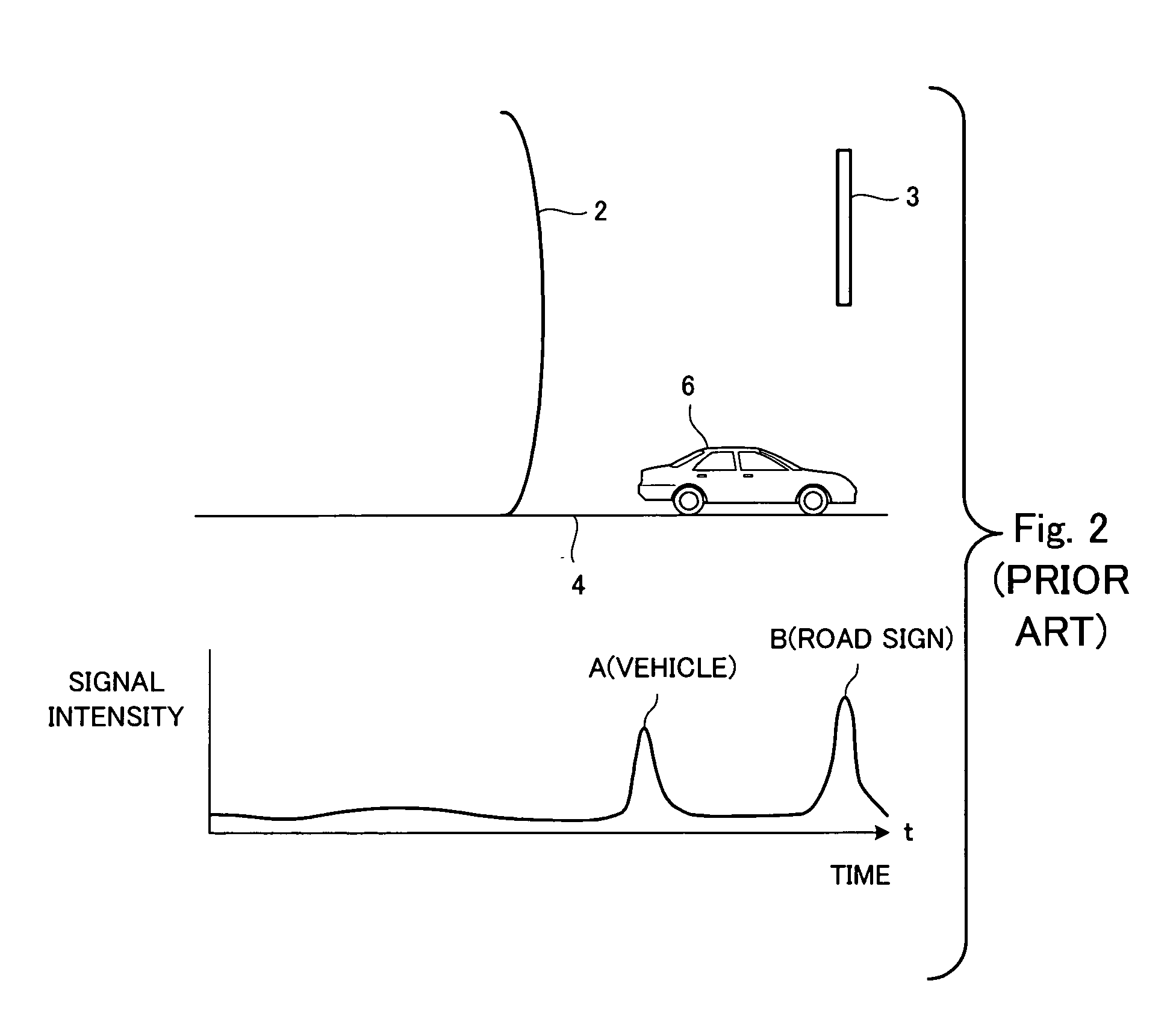Object detector for a vehicle
- Summary
- Abstract
- Description
- Claims
- Application Information
AI Technical Summary
Benefits of technology
Problems solved by technology
Method used
Image
Examples
Embodiment Construction
[0032]FIG. 5 (wherein like components are indicated by the same numerals as used and explained above) shows the positional relationship between a vehicle (the own vehicle) provided with an on-vehicle object detector embodying this invention and a front going vehicle 6. As shown schematically, the on-vehicle object detector according to this embodiment of the invention is comprised of a relative position measuring device 7 and an image-taking device 5. The relative position measuring device 7 includes a near infrared laser radar (hereinafter referred to as L / R) for emitting a near infrared laser beam (detection beam) 2 forward to measure the distance to an object that reflects it and the relative position of the beam-reflecting object based on the beam direction data. The image-taking device 5 includes a cameral for taking the image in front of the vehicle (the own vehicle) to which it is installed. If a CMOS camera with a high dynamic range (herein referred to as an HDRC) is used, a...
PUM
 Login to View More
Login to View More Abstract
Description
Claims
Application Information
 Login to View More
Login to View More - R&D
- Intellectual Property
- Life Sciences
- Materials
- Tech Scout
- Unparalleled Data Quality
- Higher Quality Content
- 60% Fewer Hallucinations
Browse by: Latest US Patents, China's latest patents, Technical Efficacy Thesaurus, Application Domain, Technology Topic, Popular Technical Reports.
© 2025 PatSnap. All rights reserved.Legal|Privacy policy|Modern Slavery Act Transparency Statement|Sitemap|About US| Contact US: help@patsnap.com



